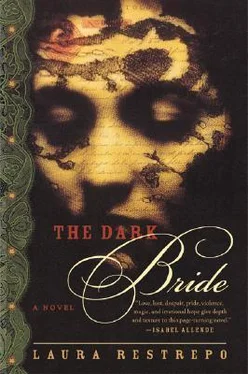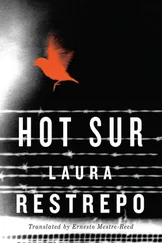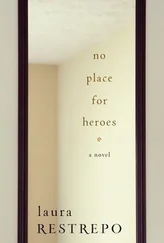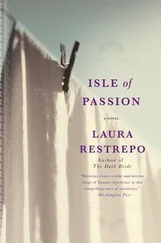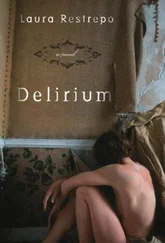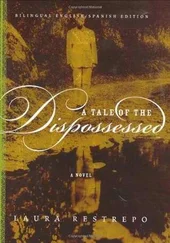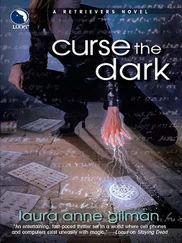“Partially for being an alcoholic, because in the better bars it wasn’t proper for a woman to get drunk. From the first day they taught us how to pretend by drinking rum diluted with three parts of mint tea instead of straight rum. But the main reason she wasn’t allowed in wasn’t that, but due to a bad habit that Fideo had.”
“And what was that habit?”
“She would cut men’s faces, or scratch them with her fingernails. Fideo had had a devilish temperament since she was a little girl, and at the first sign of displeasure with her clients she would leave them scarred. They would complain to the owners of the bar, and when there were several victims, they would throw her out into the street.”
For weeks Fideo would wander around looking for a new client, and when she found one, she would completely forget the lesson she had just learned; at the least provocation the claw would emerge and she would scratch again. And she kept going downhill from there, knocking on doors that were further and further away until she found refuge on the bottom rung, according to Tora’s peculiar and rigid hierarchy: La Copa Rota, a grain store with a straw roof and a hard-packed dirt floor that during the day sold feed and at night became a bordello, with an open drum in a corner for a toilet and illuminated by gas lamps because it had no electricity. It was on the edge of a horse path a half hour from the pueblo, in the shadow of the thick jungle where you could already begin to feel the threat of tigers and the green breath of the vast humid expanse. A dozen pipatonas, recruited from a neighboring village, took care of the shabbiest clientele in Tora, a migrating barefooted population comprised of hunters, wood gatherers, tagüeros , and other poor jungle scavengers, who returned from their outings exhausted, malaria-ridden, and full of worms to seek comfort between the first pair of legs that welcomed them.
Where else would don Enrique and Fideo have met each other? Unacceptable specimens of their respective universes, each in his own painful way. Where else, if not in this exact spot, this last resort, situated on the margin of all human vanity, would their destinies meet, the violated and drunken adolescent and the dwarf artist and aristocrat? Only at La Copa Rota, of course, according to the centrifugal laws of marginalization; in that attempt at a bordello where the Pipatón Indian women worked as prostitutes without red lightbulbs, or green ones, or yellow, let alone white ones, assuming the electric wires had reached that far; having given up the nakedness without surprises, with which they had moved freely about the jungle, to drape themselves with tight outfits made of cheap fabrics that made them look heavy and shapeless like barrels, and wearing crooked high-heeled shoes that bruised their toes; adorned with fake gold rings and earrings, these women, for whom pure gold had been — so they say — familiar and noble like water and corn.
“Did Fideo like the paintings he made of her?” I ask Todos los Santos.
“Yes, she liked them, and they made her laugh. Don Enrique told her jokes while he painted her and was very clownish. He used to put a lit match near his ass when he was going to fart and a flame would come out.”
Don Enrique distinguished himself with vast experience in matters pertaining to sex, which in comparison made the other clients of La Copa Rota appear innocent and illiterate. Because they arrived tired and starved for women, they would do their thing and then immediately fall asleep on top of the bags of grain, or they would leave and not come back, or they would come back when the women had already given up on them. But don Enrique rented one of the rooms at the back of the brothel on a permanent basis and became a member of the household, eating breakfast on the patio with the regulars and never seeming to be in a rush to do anything. In the mornings he would play dominoes or dice with Fideo, making her laugh with jokes about ladies who pee and gentlemen who poop. And in the afternoons he would paint. He painted her over and over again: lying down, standing, or sitting; dressed, undressed, or half-dressed; with red bows or perfumed flowers in her hair; taking her siesta or eating a mango or playing with the cat, as if his only happiness in life were painting her. And they toasted with little glasses of aguardiente, the strong licorice-flavored liquor. One for the model, another for the painter, two for the model, two for the painter, because they both drank shamelessly and in the same quantities.
When Fideo wasn’t there, or was in a bad mood or didn’t want to model, then don Enrique would be content to paint some drunk lying on a table or the boy behind the bar, who knew how to dress up like a fairy, a gypsy, and a beauty queen, but most of all he painted the pipatonas, staring off into space while waiting for clients, nursing their babies, or weaving straw baskets as they sat on the dirt floor waiting for clients.
He even painted the owner’s cat several times and Fideo decided that those were his best paintings. He also enjoyed watching the women dance, holding one another close, and other things that they did but didn’t talk about afterward out of shame. Fideo and the pipatonas brought him the news, massaged his legs, forever aching, with petroleum pomade and electric liniment, and forgave him for everything because he was an artist, and artists had the right to invent crazy things and to be different from everyone else. They liked to smooth his hair with their horsetail brushes and they called him Angel Hair, convinced that his exceptional hair and his strange body contained happy omens and were a symbol of something good, because without a doubt God had exerted himself to the maximum to produce such a unique and comical creature.
“You’re so blond, don Enrique!” Fideo would praise him when she was in a loving mood, and she would caress his pale down. “I’d like to have a child as blond as you.”
“Fideo never hurt don Enrique, as she did other men?” I ask Todos los Santos.
“She scratched him a few times, but nothing of much consequence. She wasn’t lacking in motives, because don Enrique was always chasing her around, trying to stick his equipment where it didn’t belong. Who knows where he learned so many strange things and dirty games, maybe in the palaces of the nobility, where he lived as a boy,” Todos los Santos tells me, and Fideo, from her hammock, lets out a lively Ay!
Without even trying, Fideo knew how to cultivate her own style, hormonal, hurtful, and crude, and she raised the bar slightly on what was permissible by disrobing and exhibiting her wounded soul and her malnourished body, by marking men’s faces for life, and by vomiting abundantly when she got carried away with the aguardiente . In a world of prostitution where the most daring acts were dance contests, Fideo was a scandal and an invitation into transgression, and Tora still remembers her as a skinny, ferocious girl with a hoarse voice who would climb up on the tables and shout:
“Bring me a man who loves me and a tiger to scratch my ass!”
One day don Enrique had confessed to the girls that he had been born a dwarf because his mother and father were first cousins, and that other horrors occurred in his family that no one wanted to talk about. Then they understood why their don Enrique, instead of living with his own people, so wealthy and elegant, had chosen to share miseries at La Copa Rota: because he himself was one of those horrors that wasn’t talked about by his family. But here he could forget about his shame and his ugliness, because he knew that they liked him just as he was, little and white-haired, wicked, kind, and playful.
As I am writing, I realize that La Copa Rota was the place destiny had also reserved for Sayonara — almost as thin as Fideo, almost as Indian as a pipatona , and as forsaken by God as either of the two. Then I think that a good part of the heart of this story lies in the journey she must have taken to elude that fate. Or perhaps not to elude it, because anecdotes aside, the Asian princess, the chosen one, la novia oscura , the universally loved, even and especially she — and therein the intensity of her passion — belongs to that incandescent center of the world that is and always will be La Copa Rota wherever it is found: indivisible nucleus, heart of hearts, living flesh, nut. Everything else on this earth is red velvet, circus lights, and sophistication. I thought of these ideas in the heat of my writing, but afterward, much later the same day, in the freshness of nightfall, when I watched a barren chicken named Felipe settle down to sleep on the pink rabbit skin — clad feet of a drowsy Todos los Santos in a corner of her kitchen, I realized that things gently explain themselves and that there is no need to ramble on.
Читать дальше
